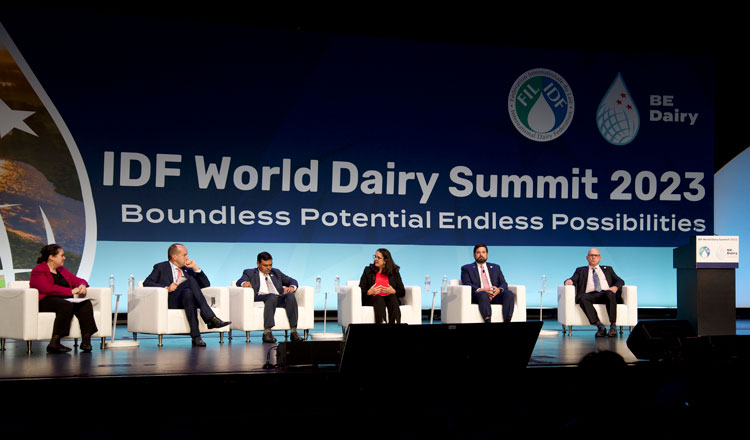
What is the dairy community’s role in the future of the world’s food system? That’s a question government leaders, animal rights activists, a growing world population, food processors, and dairy farmers are all trying to answer in their own way. To help position dairy products favorably in a society facing a variety of issues, a unified commitment and voice will serve our industry best.
The International Dairy Federation (IDF) is one organization helping serve this purpose, and during their World Dairy Summit last month, bolstering dairy’s place for global consumers was a frequent topic of discussion. Though each country has its own needs and abilities, there are commonalities in the concerns they face. Some of those also have a broader reach in the United Nations’ (UN) sustainable development goals, which set out to develop a more prosperous world. Many can be related back to how food is produced and distributed.
“There is no way these goals can be delivered without dairy and without livestock,” said IDF director general Caroline Emond. She noted that when IDF attends UN events, they aim to raise awareness of dairy’s broad contributions to these goals — from reducing hunger to eliminating poverty and improving gender equality — and reaffirming the link between food security and human health.
Even as some groups try to tear animal proteins down in the name of environmental concern, we must remember that the demand for our products is actually going up as the global population and middle class grows, said IDF president Piercristiano Brazzale.
According to the UN’s Food and Agriculture Organization, three billion people in the world cannot afford a healthy diet, added Nick Gardner of the U.S. Dairy Export Council. When paired with trade policies, dairy foods can be a big part of solving that crisis. That need cannot get lost in arguments that do not take human nutrition into account. “Food is first and foremost to nourish us,” Gardner continued.
That’s certainly not to say the dairy community is ignoring the opportunity to more efficiently use resources, a critical part of helping future generations benefit from dairy products. All types of dairy farmers take some kind of effort to help their land, water, business, and community be better than how it began. In India, for example, where most farms have just a few cows, Meenesh Shah of the National Dairy Development Board noted that farmers aim to make more milk from even fewer cows. Some households even have small digesters that produce biogas for the family to use in their home.
“We have to be able to equip farmers around the world with the tools they need to sustainably farm,” said Marilyn Hershey, a Pennsylvania dairy farmer and chairwoman of Dairy Management Inc.
A focus on science is necessary to help push those initiatives forward, and that’s something organizations like IDF provide: facts.
“There is no climate agenda without the food agenda, and there’s no food agenda without the dairy agenda,” said Eric Harris from Tetra Pak in summarizing why the dairy community’s voice must come together in these conversations about the future of food. Without it, the answer to the question of dairy’s place in food systems could be decided by those who don’t see the full picture of our products.








